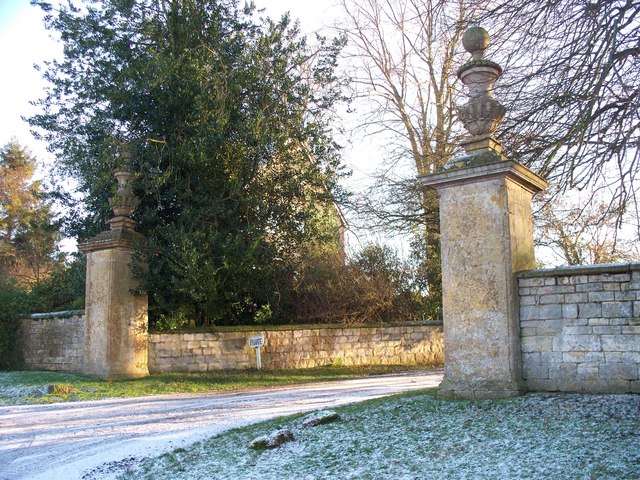Ebrington Manor on:
[Wikipedia]
[Google]
[Amazon]
Ebrington Manor is a
 The
The
grade II listed
In the United Kingdom, a listed building is a structure of particular architectural or historic interest deserving of special protection. Such buildings are placed on one of the four statutory lists maintained by Historic England in England, H ...
manor house
A manor house was historically the main residence of the lord of the manor. The house formed the administrative centre of a manor in the European feudal system; within its great hall were usually held the lord's manorial courts, communal mea ...
in the parish
A parish is a territorial entity in many Christianity, Christian denominations, constituting a division within a diocese. A parish is under the pastoral care and clerical jurisdiction of a priest#Christianity, priest, often termed a parish pries ...
of Ebrington in Gloucestershire
Gloucestershire ( , ; abbreviated Glos.) is a Ceremonial counties of England, ceremonial county in South West England. It is bordered by Herefordshire to the north-west, Worcestershire to the north, Warwickshire to the north-east, Oxfordshire ...
, England. Since 1476 it has been a seat of the Fortescue family, since 1789 Earls Fortescue.
Location
It is located within the village of Ebrington in Gloucestershire, immediately to the south-west of the parish church of Ebrington.History
The house dates back to the fourteenth or fifteenth century, and was significantly altered twice, in the seventeenth and nineteenth centuries. It was built on land purchased by Sir John Fortescue (c.1394-1479), who wasChief Justice of the King's Bench
The Lord or Lady Chief Justice of England and Wales is the head of the judiciary of England and Wales and the president of the courts of England and Wales.
Until 2005 the lord chief justice was the second-most senior judge of the English a ...
.
An heraldic cartouche
upalt=A stone face carved with coloured hieroglyphics. Two cartouches - ovoid shapes with hieroglyphics inside - are visible at the bottom., Birth and throne cartouches of Pharaoh KV17.html" ;"title="Seti I, from KV17">Seti I, from KV17 at the ...
above the entrance door displays the arms of Fortescue impaling Aylmer, representing Hugh Fortescue (1665–1719), and his second wife Lucy Aylmer, whom he married after 1708, a daughter of Matthew Aylmer, 1st Baron Aylmer
Admiral of the Fleet (Royal Navy), Admiral of the Fleet Matthew Aylmer, 1st Baron Aylmer ( – 18 August 1720), of Covent Garden, Westminster, and Westcliffe, near Dover, was an Anglo-Irish Royal Navy officer and Whig politician who sat in the E ...
(circa 1650–1720), grandparents of Hugh Fortescue, 1st Earl Fortescue (1753-1841).
During World War II
World War II or the Second World War (1 September 1939 – 2 September 1945) was a World war, global conflict between two coalitions: the Allies of World War II, Allies and the Axis powers. World War II by country, Nearly all of the wo ...
the house was run by the American Red Cross
The American National Red Cross is a Nonprofit organization, nonprofit Humanitarianism, humanitarian organization that provides emergency assistance, disaster relief, and disaster preparedness education in the United States. Clara Barton founded ...
for rest and recuperation for United States Army Air Forces
The United States Army Air Forces (USAAF or AAF) was the major land-based aerial warfare service component of the United States Army and ''de facto'' aerial warfare service branch of the United States during and immediately after World War II ...
bomber crews. In 1970 the house was the location of an attempted murder and arson.
The current Earl has three daughters and no sons. Therefore the family has been involved in a campaign to change inheritance laws.
It was listed as a grade II
In the United Kingdom, a listed building is a structure of particular architectural or historic interest deserving of special protection. Such buildings are placed on one of the four statutory lists maintained by Historic England in England, Hi ...
building by English Heritage
English Heritage (officially the English Heritage Trust) is a charity that manages over 400 historic monuments, buildings and places. These include prehistoric sites, a battlefield, medieval castles, Roman forts, historic industrial sites, Lis ...
on 25 August 1960.
Architecture
 The
The limestone
Limestone is a type of carbonate rock, carbonate sedimentary rock which is the main source of the material Lime (material), lime. It is composed mostly of the minerals calcite and aragonite, which are different Polymorphism (materials science) ...
building has grey slate roofs and a central five flue chimney. The main body of the house includes a 17th centy hall and balustrade
A baluster () is an upright support, often a vertical moulded shaft, square, or lathe-turned form found in stairways, parapets, and other architectural features. In furniture construction it is known as a spindle. Common materials used in its ...
d gallery. There is extensive plasterwork throughout the house, some of which was moved from a summerhouse in the grounds. The main entrance gate piers and the summer-house in the grounds are both grade II* listed buildings. The garden was laid out in the 1940s.
References
{{coord, 52.0575, -1.7338, type:landmark_region:GB, display=title Country houses in Gloucestershire Grade II listed buildings in Gloucestershire Fortescue family